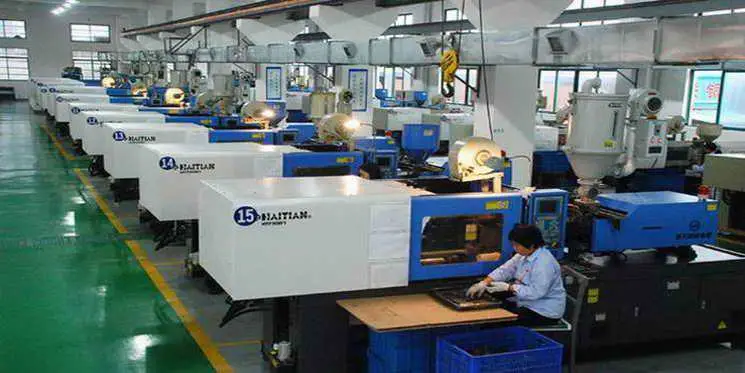Plasticization is a process in which plastic raw materials are heated to flow in the barrel, and then through the rotation of the screw or the pushing of the plunger, the molten material reaches uniform composition and has good plasticity. Although plasticization is only a preparatory stage in the entire injection molding process, the quality of the melt obtained by plasticization has a great impact on the subsequent injection molding process and the quality of the plastic parts.
(1) Basic requirements for plasticizing
1) The molten material should reach the specified molding temperature before entering the mold cavity, and the temperature should be uniform. Each plastic has its own most suitable molding temperature, beyond this range, the molding quality will be greatly affected, so let the molten material enter the mold cavity at a uniform and consistent specified temperature, is the main requirement of plasticizing operation.
2) Thermal decomposition does not occur or rarely occurs. The heat resistance of different plastic varieties is not the same, when the temperature is too high, beyond the heat resistance range of plastic, plastic will decompose, produce volatile gases, these gases exist in large quantities in the mold cavity, if it is too late to discharge, it is easy to cause the quality of plastic parts, in addition, melting decomposition, will make the quality of the melting bad, will also affect the quality.
Due to the poor thermal conductivity of thermoplastics, it is a very complex problem to achieve uniform melting plasticization of materials, and many factors such as the way of plasticization process, heating method and heating time have a great impact on the plasticization quality.
(2) The impact of injection molding equipment on plasticization
There are two main types of equipment used in injection molding: plunger injection molding machines and screw injection molding machines
- The movement of plastics in the plunger injection molding machine can only rely on the pushing of the plunger, there is almost no mixing effect, and the flow of plastics in the barrel is in a layered flow, which is not conducive to the conduction of heat and is not conducive to reducing the temperature difference. In addition, the thermal conductivity of the plastic itself is poor, and the heat required for the melting of the plastic mainly depends on the external heating of the cylinder, which is easy to make the temperature near the wall of the cylinder high, and the temperature of the central part low, forming a temperature difference. The appearance quality and mechanical properties of the plastic parts formed by the molten material with poor thermal uniformity are impossible to be good, and the internal stress of the plastic parts is large and the deformation is large. Because the plunger injection molding machine itself has many insurmountable shortcomings, it is currently only used by some small injection molding machines.
Screw injection molding machine. This is the injection molding machine widely used in various types of injection molding machines. Its main working component is a rotating screw, which pushes the plastic raw material forward, and in the push process, the plastic raw material is gradually compacted. Under the combined action of electric heating outside the barrel and shear heat when the screw rotates, the raw material gradually melts into a viscous flow state, and the purpose of uniform plasticization is achieved under the stirring, mixing and shear action of the screw. Screw injection molding machine can use different back pressure and screw speed to improve the plasticizing situation, so its plasticizing ability is high and the effect is good.






